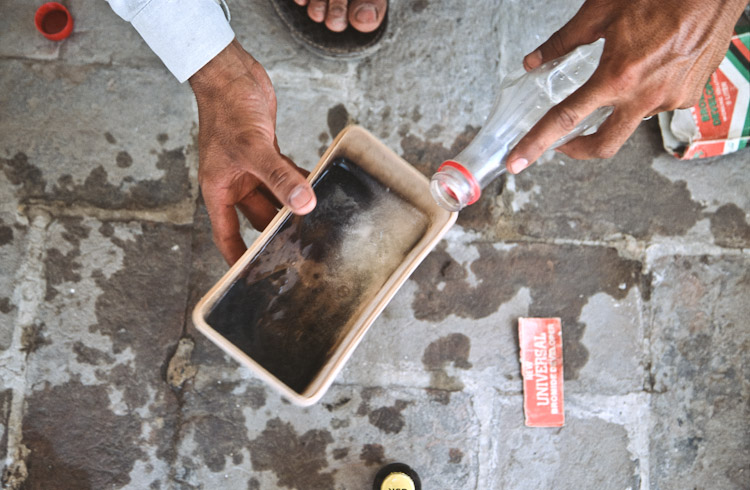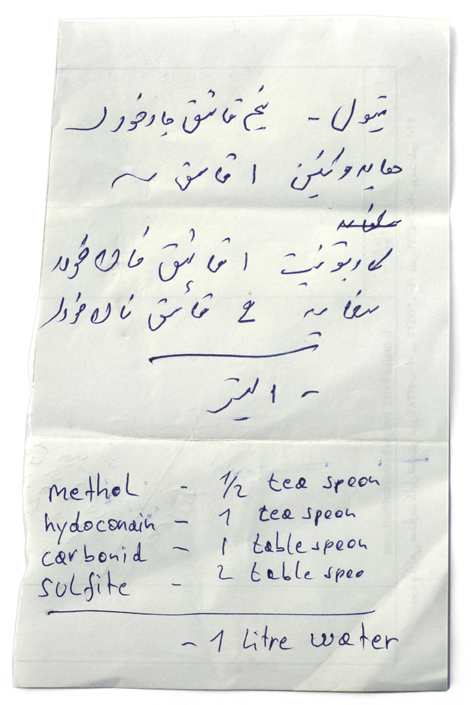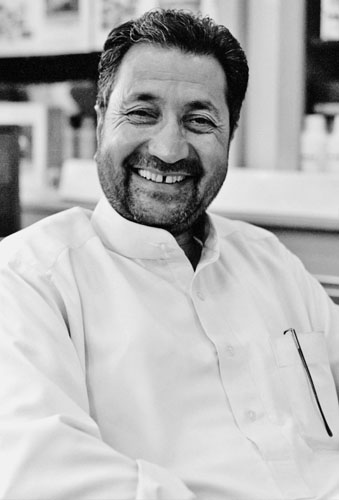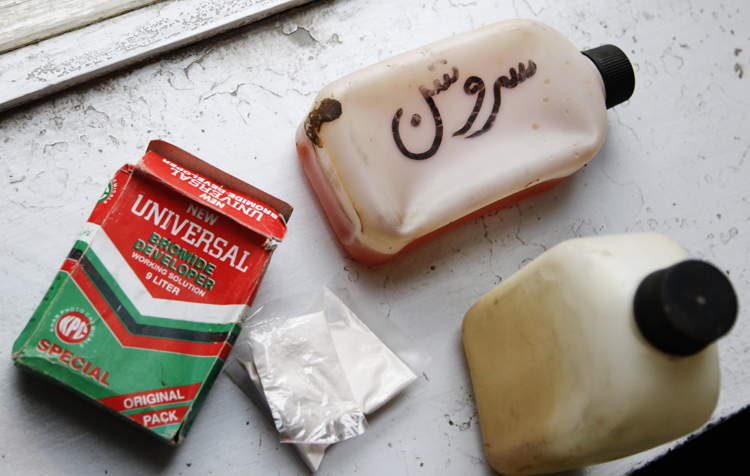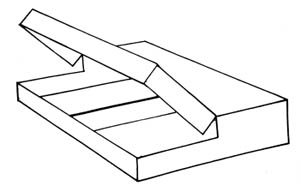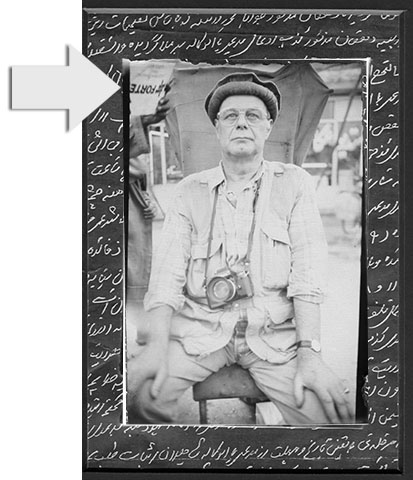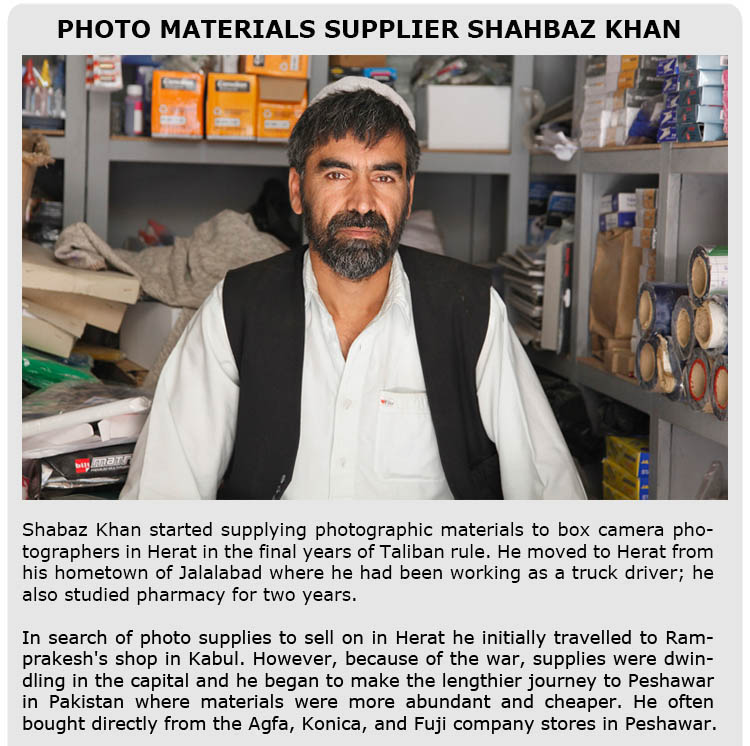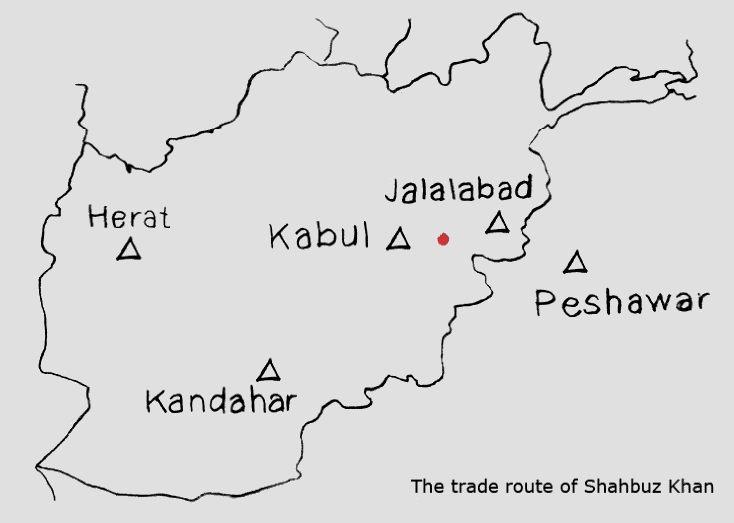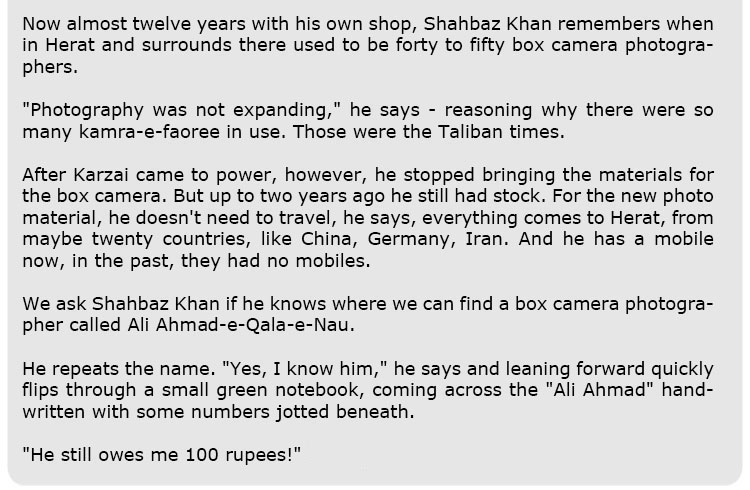
|
|
|
MATERIALS
In the past photographic paper for the kamra-e-faoree often came from Europe and Japan and the chemicals from Pakistan or Russia. Once easily obtainable, these materials are now rare commodities in Afghanistan.
Most of the photographers we met did not refer to brands such as Ilford or Kodak when discussing the chemicals they used. They usually referred to developer as 'solution' and often mixed the individual ingredients of the developer themselves. Therefore, they were usually capable of listing them from memory. The individual ingredients of the developer were mixed with water. The fixer was often referred to as 'ipur'. The average temperature for both fixer and developer is around 20 degrees Celsius. If the chemicals are warmer they will work faster, and if colder, slower. As box camera photographers worked outside this could be a real challenge. Asad Ullah from Kabul told us that he would heat the chemicals on a stove before placing them inside the camera.
|
||||||||
The photographic fixer is a chemical that desensitizes the paper to light. Without the fixing process, the image will fog and even disappear completely from the paper. Izzat Ullah, in the video below, is using a fixer salt to stabilize his image. These salt rocks simply have to be dissolved in water. If kept dry they can last for decades.
|
|||||||||
Ali Ahmad is changing the photographic paper inside his camera. In order to avoid light from entering the camera he covers it with a thick black cloth. Taking the sheets of paper out of their packaging and inserting them into the paper tray is not so easy a task as he has to do everything with one hand and of course without seeing anything. |
|||||||||
.............................................................................. |
|||||||||



